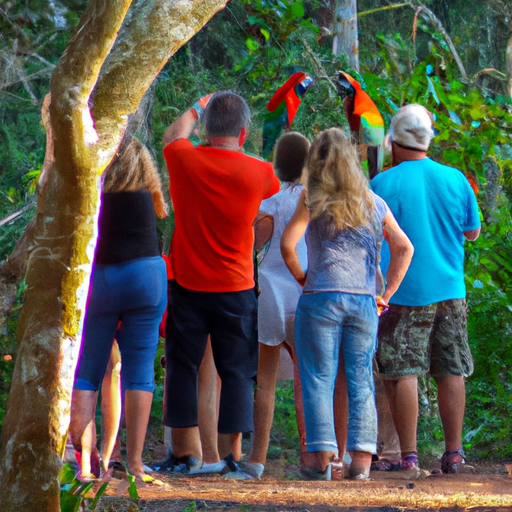Explore Costa Rica's commitment to environmental conservation while experiencing its stunning biodiversity and adventure opportunities. Discover how to minimize your carbon footprint while maximizing authentic local experiences. Learn practical tips for sustainable travel that make a positive impact on local communities.

Costa Rica has emerged as a global leader in sustainable tourism, with its remarkable commitment to environmental conservation and biodiversity protection. This comprehensive guide will help you explore this beautiful country while maintaining responsible travel practices and supporting local communities. From pristine rainforests to volcanic landscapes, discover how to experience Costa Rica's natural wonders sustainably.
Understanding Eco-Tourism in Costa Rica
Costa Rica's approach to tourism is deeply rooted in environmental consciousness, with nearly 30% of its territory protected as national parks or reserves. The country aims to become carbon neutral by 2050, and many tourism operators are already leading the way with innovative sustainable practices. Understanding these initiatives helps visitors make more informed choices about their travel impact.
Choosing Sustainable Accommodations
Eco-lodges and sustainable hotels in Costa Rica range from luxury resorts to simple rainforest cabinas. Look for properties certified by the Certification for Sustainable Tourism (CST) program. These establishments often use renewable energy, practice water conservation, and employ local staff. Many also contribute to community development projects and wildlife conservation efforts.
Responsible Wildlife Viewing
Costa Rica's biodiversity is legendary, home to over 500,000 species. When observing wildlife, maintain appropriate distances, never feed animals, and choose guides who follow ethical wildlife viewing practices. The best experiences often come from patience and respect for natural behaviors, whether you're watching sloths in Manuel Antonio or quetzals in Monteverde.
Supporting Local Communities
Engaging with local communities enriches your travel experience while contributing to sustainable development. Visit indigenous territories with authorized guides, purchase handicrafts directly from artisans, and participate in community-based tourism initiatives. Many communities offer authentic experiences like traditional cooking classes or agricultural tours.
Sustainable Transportation Options
While Costa Rica's public transportation system isn't extensive, there are various eco-friendly ways to explore. Consider using shared shuttles between destinations, renting hybrid vehicles, or choosing accommodations within walking distance of attractions. Some areas, like Tortuguero, are only accessible by boat or small plane, offering unique perspectives of the landscape.
Minimizing Environmental Impact
Practical steps for reducing your environmental footprint include carrying reusable water bottles (tap water is generally safe in Costa Rica), using biodegradable sunscreen to protect marine environments, and following 'leave no trace' principles on trails. Many tours now include beach clean-ups or tree-planting activities as part of their offerings.
Sustainable Adventure Activities
Costa Rica's adventure activities can be both thrilling and environmentally responsible. Choose operators who maintain high safety standards and environmental practices for activities like zip-lining, white-water rafting, or surfing. Many companies use proceeds to fund conservation projects or community initiatives.
Eating Sustainably
Support restaurants that source ingredients locally and practice sustainable fishing. Traditional Costa Rican cuisine naturally emphasizes local, seasonal ingredients. Farmers' markets (ferias) offer fresh produce and direct interaction with local farmers. Some regions also offer agritourism experiences on organic farms.
Conservation Participation
Many organizations welcome volunteer participation in conservation projects, from sea turtle protection to reforestation efforts. Even short-term visitors can contribute meaningfully through citizen science programs or day-long volunteer activities. Research reputable organizations in advance to ensure your efforts have genuine impact.
Cultural Sensitivity
Respecting local customs and traditions is crucial for sustainable tourism. Learn basic Spanish phrases, ask permission before taking photos of people, and dress appropriately, especially in rural areas. Understanding and appreciating local culture helps create more meaningful travel experiences.
Planning for Different Seasons
Costa Rica's dry and green seasons each offer unique opportunities for sustainable travel. The green season (May to November) means fewer tourists and lower prices, but also requires more flexible planning. Many sustainable properties use this time for maintenance and community projects.
Measuring and Offsetting Impact
Consider calculating your trip's carbon footprint and exploring offset options. Many Costa Rican organizations offer verified carbon offset programs through reforestation projects. Some tour operators include carbon offsetting in their package prices.
Looking to the Future
Costa Rica's commitment to sustainable tourism continues to evolve, with new initiatives focusing on renewable energy, waste reduction, and community development. By choosing to travel sustainably, visitors contribute to these positive changes while experiencing one of the world's most remarkable destinations.
The lasting impact of sustainable travel extends far beyond individual trips. By making conscious choices about how we travel, we help preserve destinations for future generations while supporting local communities and conservation efforts. Costa Rica provides a model for how tourism can benefit both visitors and hosts while protecting the natural environment.



